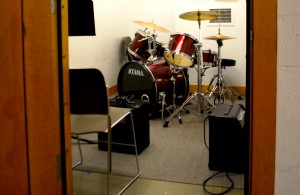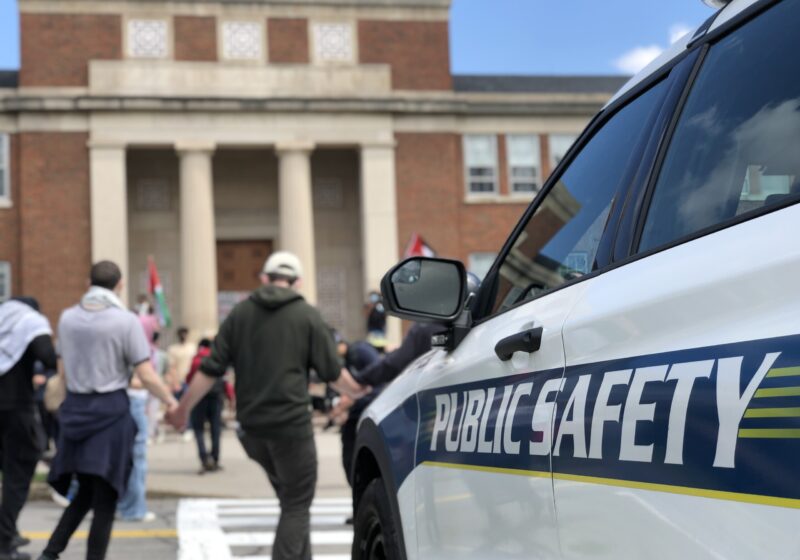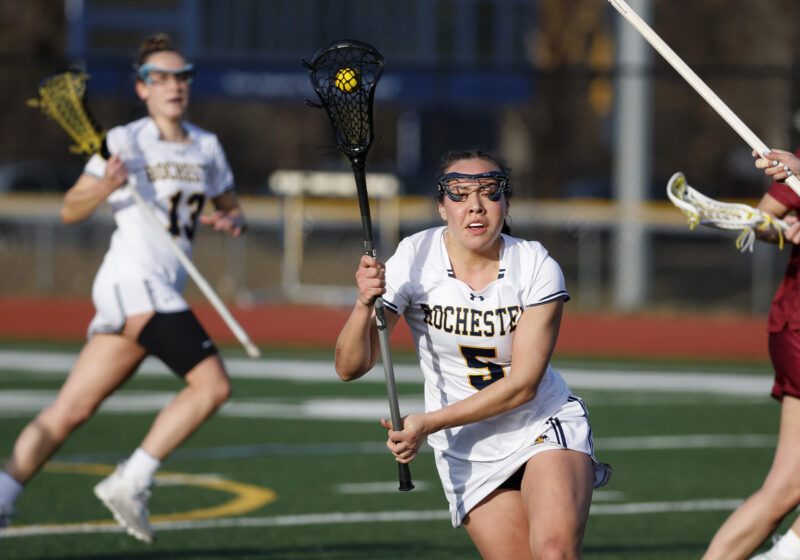When most people hear the word music in the context of UR, the first thing that comes to mind is the renowned Eastman School of Music.
This leaves the River Campus music department, a little-known thriving entity, somewhat in a shadow, struggling to gain clout in the face of Eastman’s prominence.
But one thing remains clear: Student demand for music on the River Campus — for academic classes, ensembles and lessons — is high and is increasing, far outpacing spatial accommodations and leaving the music department at what seems to be a troubling impasse.
No longer able to avoid this space crunch, a group of students — some formally involved in the music department on campus and some not — are starting a burgeoning grassroots movement for what they say is much-needed change.
The group met for the first time on Sunday, Oct. 16 with music professor and chair of the River Campus music department John Covach to discuss concerns.
“There’s a huge shortage of adequate space for small, medium and large musical ensembles to rehearse — both in number and appropriate size,” said junior Gabrielle Cornish, president of the Undergraduate Musicians’ Council and a music major. “The practice rooms on campus are of a subpar quality in terms of size, sound-proofing and equipment.”
Cornish, who will be leading the student coalition, said that nearly 30 students attended the first meeting on Sunday and that she is confident the “actual number of students interested in the cause is well over 100.”
The group plans to present Dean of the College Richard Feldman with a comprehensive compilation of needs and grievances within the next week.
Cornish said she is “confident that the administration will be willing to work with us,” though she is unsure to what degree money will be an impediment.
Approximately 1,000 students on the River Campus participate in some form of musical education each semester, such as lessons at Eastman, ensembles or academic courses, according to Covach.
By comparison, Covach says, the theater department serves roughly 100 students per year.
Approximately 90 percent of students involved in music on the River Campus are not music majors, proving what Covach considers to be the prominent role of the music department in attracting high caliber students to UR.
“Some of the strongest students choose UR because of music,” he said. “If the music department is healthy, it could be an asset to the success of the whole college.”
The unique River Campus music curriculum puts music in the context of an Arts and Science degree, allowing the department to better serve the undergraduate student body by catering to the large number of students who are passionate about music, but either do not want to pursue the “intense degree” at Eastman, or whose primary academic focus lies elsewhere, Covach said.
But space has become an unavoidable detriment to the department, which only controls two classrooms and the office space on the second floor of Todd Union. For every other space, the department needs to book the same way that student groups book space.
There are 17 practice rooms in Spurrier — 11 traditional piano practice rooms, four percussion rooms, the “jam room” (drum set plus amps for public use) and the carillon practice room. These rooms are available for any UR student. There are also three larger practice rooms in Lower Strong Auditorium primarily reserved for music majors and River Campus students studying piano with an Eastman faculty member.
Covach stressed that the administration has provided unwavering support on the academic side of the department and has been instrumental in solving many problems related to courses in recent years.
But student feedback is needed.
“Our department is just one of many with space problems — everyone has a good argument,” he said. “But when students say we really need the spaces, it gives the administration a better idea of what is needed. It makes the issue a priority.”
Covach is hopeful that when the new education building is completed behind Lattimore Hall, the subsequently vacated Dewey Hall will give the administration “a chance to re-see space” and open up rooms in Dewey for the music department.
Plans began two years ago to create something resembling a “Fine Arts Village” on the River Campus. The design would have entailed renovating Upper and Lower Strong and creating a vast space to house several departments — theater, dance, music and all other fine arts related activities, Covach said.
Despite “lots of meetings” about this ambitious endeavor, the plan, which had a price tag of between $60 and $80 million, “fell off the administration’s radar,” Covach said.
Dean of the Faculty Peter Lennie said that these plans are in fact “unchanged” and have in no way been abandoned — a new center for the performing arts is part of UR’s long-term strategic plans.
Lennie declined to give details on either the existence of funds or a target date for the center’s construction. He also said that the planned $10 million building for the new Digital Media Center and Innovation Labs did not receive any of the funds originally allocated for the performing arts center, a concern expressed by some in the music department.
The music department will have limited space in the Digital Media building, but there will be ample space for collaborative student work, Covach said.
“We’re well aware of the space pressures faced by many of our departments, including the music department,” Lennie said, adding that he thinks when the Warner School of Education moves in early 2013 space will be made available for several departments, including music.
In the absence of any concrete plans for the performing arts center, Covach said he envisions a Todd Music Building, which would be possible if the theater department could relocate to a new space.
The music department could then expand into this entire space and would be able to have simultaneous rehearsals, a lobby for receptions, practice rooms where the campus radio station, WRUR, is currently located and more office space — essentially a “self-contained unit” for all things music, Covach said.
“I am not advocating pushing theater out of Todd, but if they were to get a better space — one that would enhance that program — we could certainly use the space they would vacate,” he said.
No Jackets Required currently practices in “a tiny room in the Spurrier practice room area that is basically an entrance to an old pool,” said junior and NJR Co-President Tom Krasner. He said it is “nearly impossible” to fit all of the group’s musicians — which can number up to 14 for its big shows — into the room at the same time. The room is also made of tile, which Krasner said is “extremely dangerous for people’s ears.”
Krasner added that some personal equipment of the group’s members has been damaged because of space, but said NJR has been fortunate in its ability to “struggle through it and put on great concerts.”
UR’s Percussion Ensemble has also been negatively impacted by spatial constraints and has to hold rehearsals on Sunday nights because of the difficulties in scheduling.
Krasner, who is also involved in the Percussion Ensemble, said that the lack of space limits the instruments the group can have — specifically a five octave marimba and more than one set of vibes, instruments he said are standard for most percussion ensembles and a part of most percussion ensemble music.
“Because we don’t have that here, we are forced to choose more obscure and weird pieces that rely less on standard instruments,” he said.
Krasner added that the ensemble has to lift its heaviest instruments from six-foot risers before and after every rehearsal because of a lack of proper storage space, which often results in things getting broken.
Marching Pep Band is another group on campus that has been affected by a lack of rehearsal space as the group has seen its membership double in recent years and now has about 40 members. Half of their rehearsals are held in the Hale Room at the athletic center and the other half in the Palestra, during times when the space is used for open basketball practices, making rehearsals difficult.
“We definitely appreciate the space, but it certainly wasn’t built with music ensemble acoustics in mind,” said junior and Pep Band co-president Dana Belles.
Belles said she often has difficulty practicing her mallet percussion music because there is only one small mallet percussion practice room on campus, in Spurrier, where both the marimba and timpani cannot be played at the same time, which she said complicates practicing.
But she is optimistic about this new push for change.
“If the people who can make the official changes are not consciously aware of the problem, how will it ever get solved?” she asked. “It makes sense — Eastman is, of course, an excellent music conservatory — but I feel the music department at the River Campus is also very successful and deserves much more attention than it receives.”
Buletti is a member of the class of 2013.



